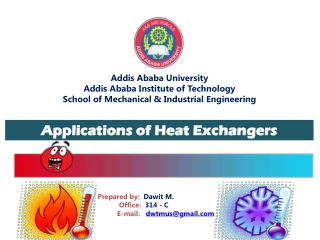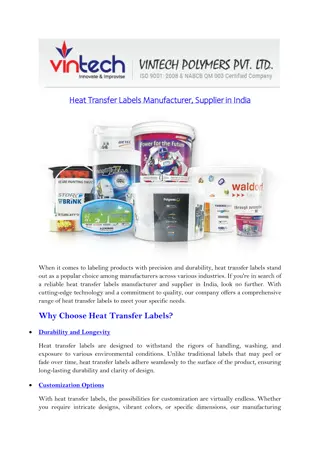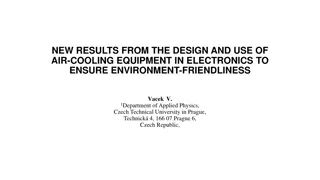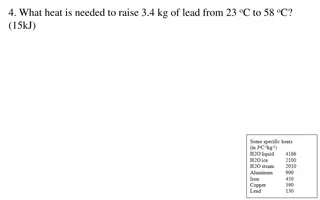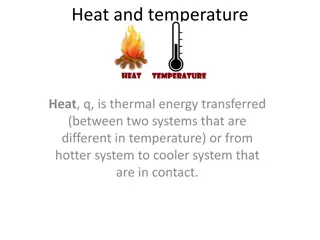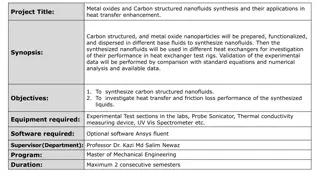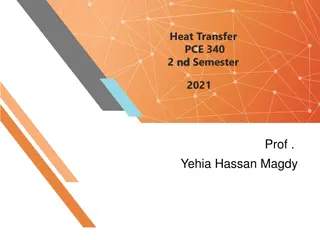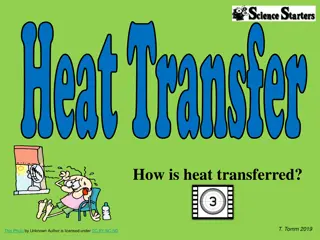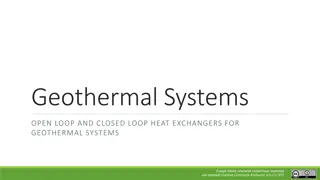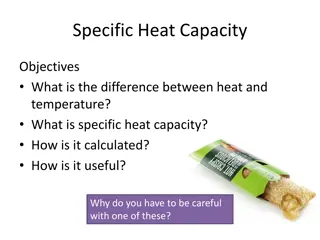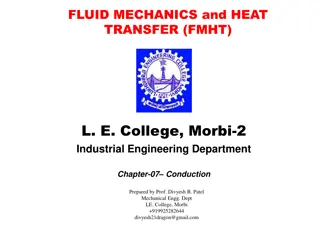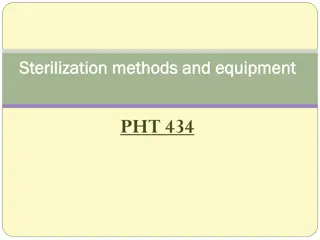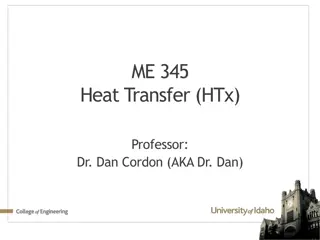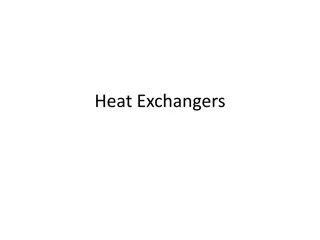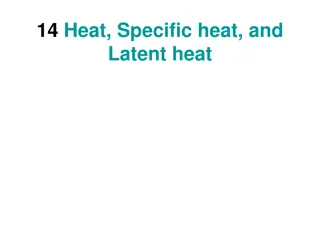Heat Exchangers: Common Equipment for Heat Transfer
Heat exchangers play a crucial role in various industries by facilitating the transfer of heat between fluids without direct contact. This type of equipment is essential for managing temperatures efficiently in processes involving liquids or gases. The two key types of heat exchangers, such as shell-and-tube and double-pipe exchangers, are widely used across different industrial applications. Understanding the components and working principles of heat exchangers is fundamental for optimizing heat transfer operations.
Download Presentation

Please find below an Image/Link to download the presentation.
The content on the website is provided AS IS for your information and personal use only. It may not be sold, licensed, or shared on other websites without obtaining consent from the author.If you encounter any issues during the download, it is possible that the publisher has removed the file from their server.
You are allowed to download the files provided on this website for personal or commercial use, subject to the condition that they are used lawfully. All files are the property of their respective owners.
The content on the website is provided AS IS for your information and personal use only. It may not be sold, licensed, or shared on other websites without obtaining consent from the author.
E N D
Presentation Transcript
Heat Exchangers Heat exchangers are one of the most common pieces of equipment found in all plants. Heat Exchangers are components that allow the transfer of heat from one fluid (liquid or gas) to another fluid. In a heat exchanger there is no direct contact between the two fluids. The heat is transferred from the hot fluid to the metal isolating the two fluids and then to the cooler fluid.
Double Pipe Simplest type has one tube inside another - inner tube may have longitudinal fins on the outside However, most have a number of tubes in the outer tube - can have very many tubes thus becoming a shell-and-tube
Shell-and-Tube Heat Exchangers are the most important type of HE. It is used in almost every type of industry. This type of heat exchanger consists of a set of tubes in a container called a shell. The fluid flowing inside the tubes is called the tube side fluid and the fluid flowing on the outside of the tubes is the shell side fluid.
Main Components of Shell-and-Tube Heat Exchangers
Some common heat-exchanger terms Tube side: Inside the tubes. Shell side: Outside the tubes, between the tubes and the shell. Tube sheet A thick plate provided with holes (one per tube) in which the tubes are fixed. Tube bundle Consists of tubes, tube sheet and baffle plates Shell A cylinder of plate in which the tube bundle is placed
\r ,_-))J I C Ii ; l :t. I 011 " rt.a . I I ..r - .. fl' ..1111 .\ h:at r v l. m l\ 'U 'Ji1e ra tlilkrc1 1 1& r .'.rml,, r v ,, 41 ,u,,c. 1 . I I,, Si111I .u I "'1t c h: l1111 "C'1 11nit . I' , ,c.J 11 ri & ur n II 11 111tc " " " 1'1k I im,lr 1u 11 ' IUl 11 llu J1tll l1t 11 \ heart Jnd 1Cw11n-., , I th:t 1 I l l
TEMA Heat Exchangers
Shell and Tube Heat Exchangers Construction Fixed Tube-sheet type U-tube type Floating Head type
Front head type A-type B-type B A Channel and removable cover Bonnet (integral cover)
Shell type E-type F shell Longitudinal baffle F E One-pass shell Two-pass shell
More shell types G and H shells normally only used for horizontal thermosyphon reboilers J and X shells if allowable pressure drop can not be achieved in an E shell G H Longitudinal baffles Split flow Double split flow J X Divided flow Cross flow
Low-finned Tubes Flat end to go into tube sheet and intermediate flat portions for baffle locations Available in variety of metals including stainless steel, titanium and inconels
Plate and frame Plates hung vertically and clamped in a press or frame. Gaskets direct the streams between alternate plates and prevent external leakage Plates made of stainless steel or higher quality material Plates corrugated to give points of support and increase heat transfer
Plate types Corrugations on plate improve heat transfer give rigidity Many points of contact and a tortuous flow path Chevron Washboard
General view of plate exchanger Plate exchanger normally refers to a gasketed plate- and-frame exchanger
Flow Arrangement within a PHE Gaskets arranged for each stream to flow between alternate plates Alternate plates (often same plate types inverted)
Air-Cooled or Fin-Fan Exchanger
Air-cooled exchanger Air blown across finned tubes (forced draught type) Can suck air across (induced draught) Finned tubes
Spiral Heat Exchangers Spiral heat exchangers can be used in most applications in the chemical process industry In many difficult applications where fouling and plugging are problems, a standard shell and tube design may not be effective While a spiral heat exchanger often has a higher initial cost, it may provide a lower life cycle cost due to lower fouling rates and ease of maintenance
A spiral heat exchanger is composed of two long, flat plates wrapped around a mandrel or center tube, creating two concentric spiral channels In a spiral heat exchanger, the hot fluid flows into the center of the unit and spirals outward toward the outer plates while at the same time, the cold fluid enters the periphery and spiral inward, exiting at the center



